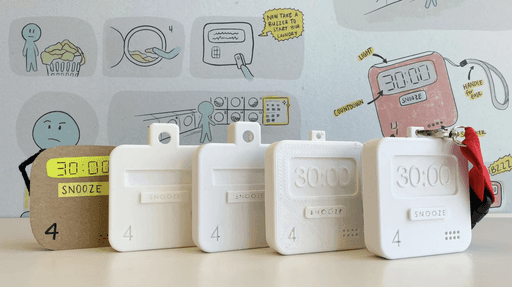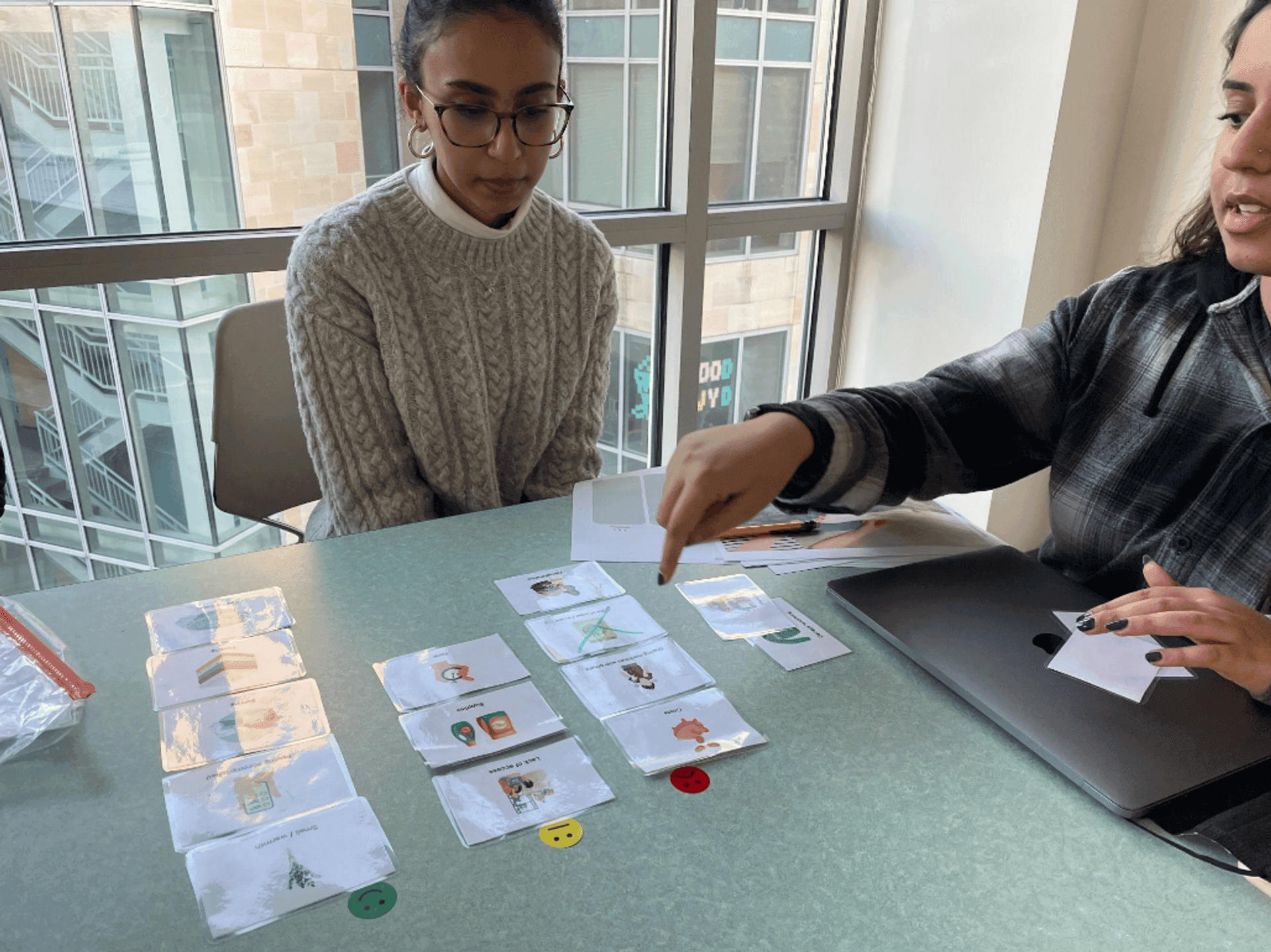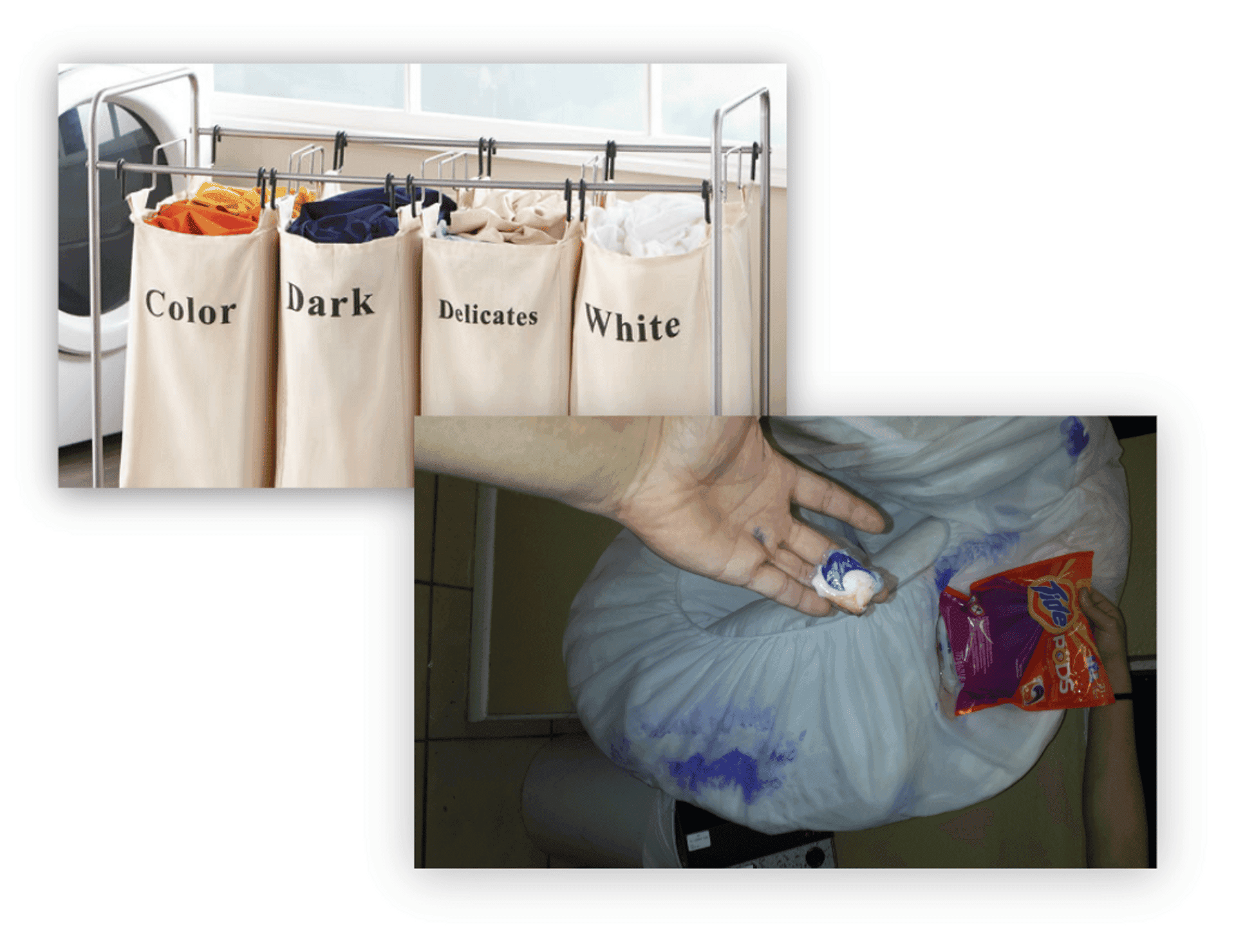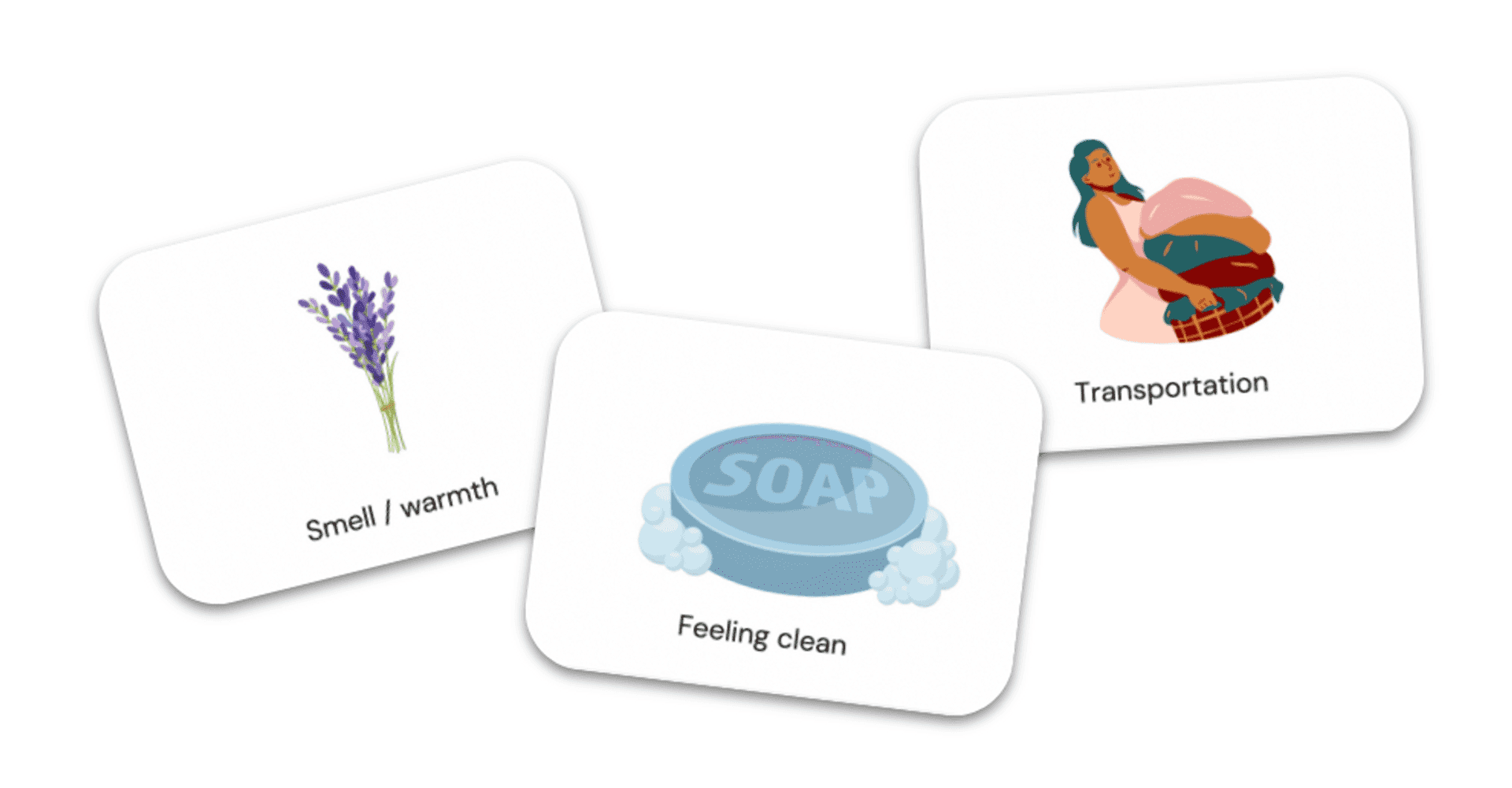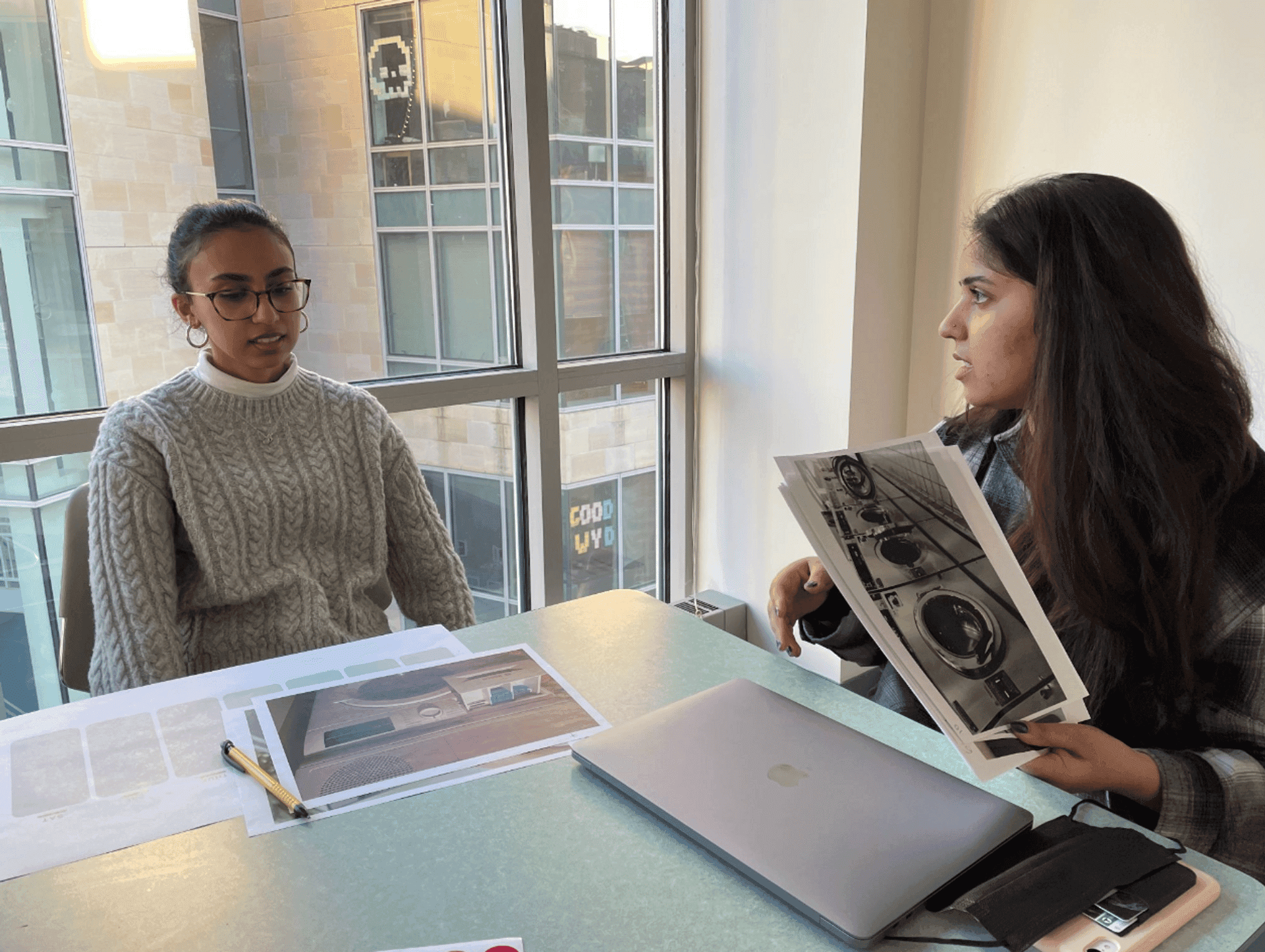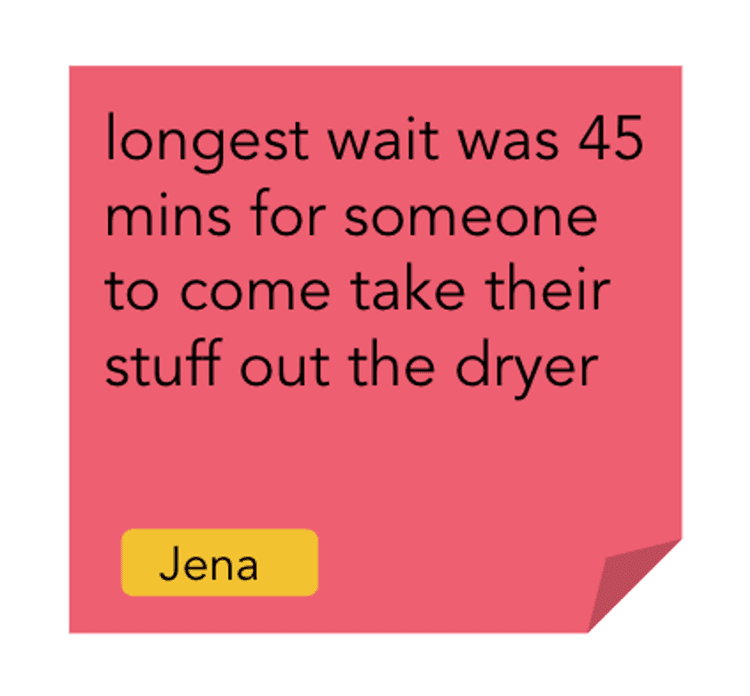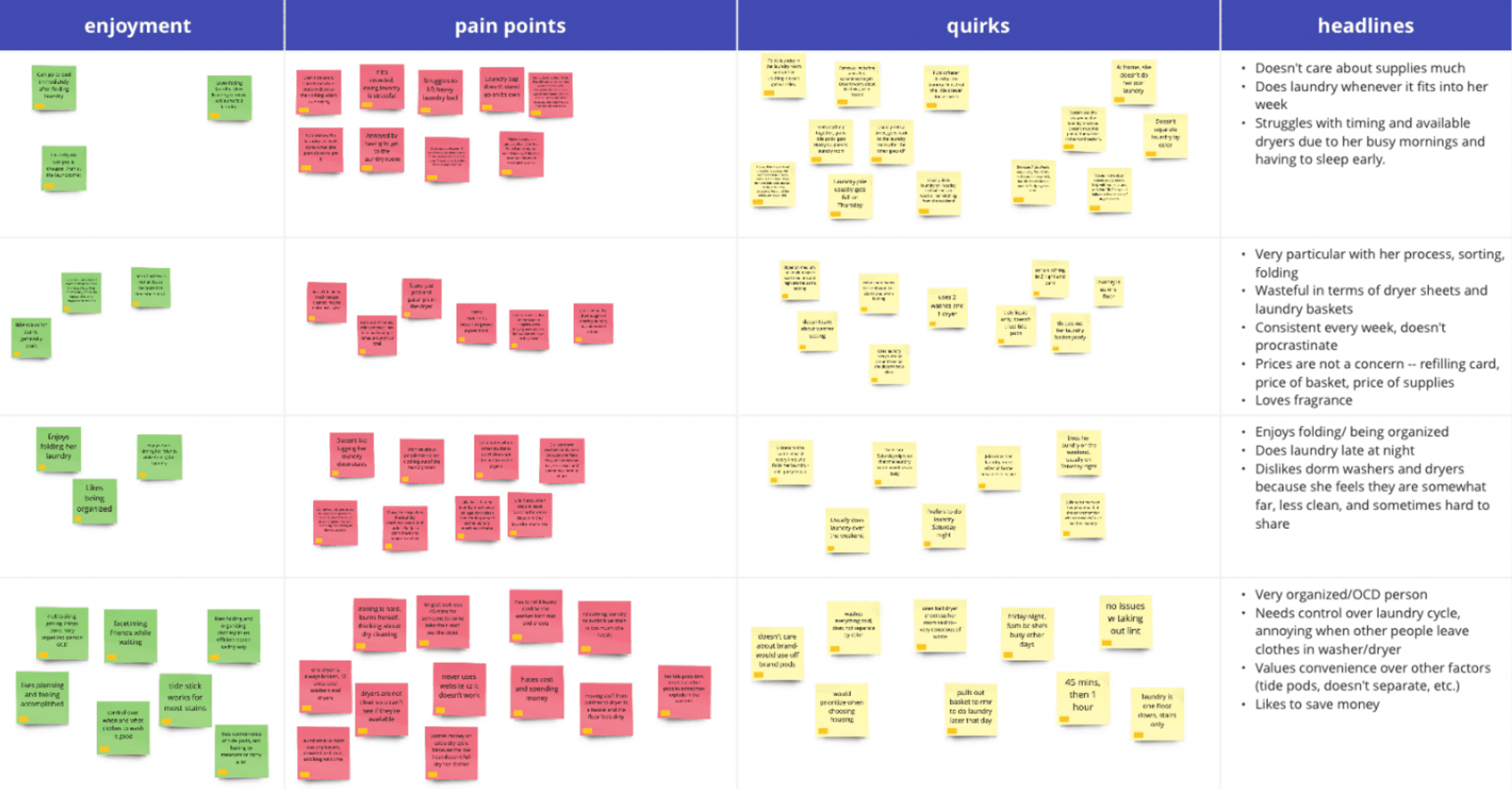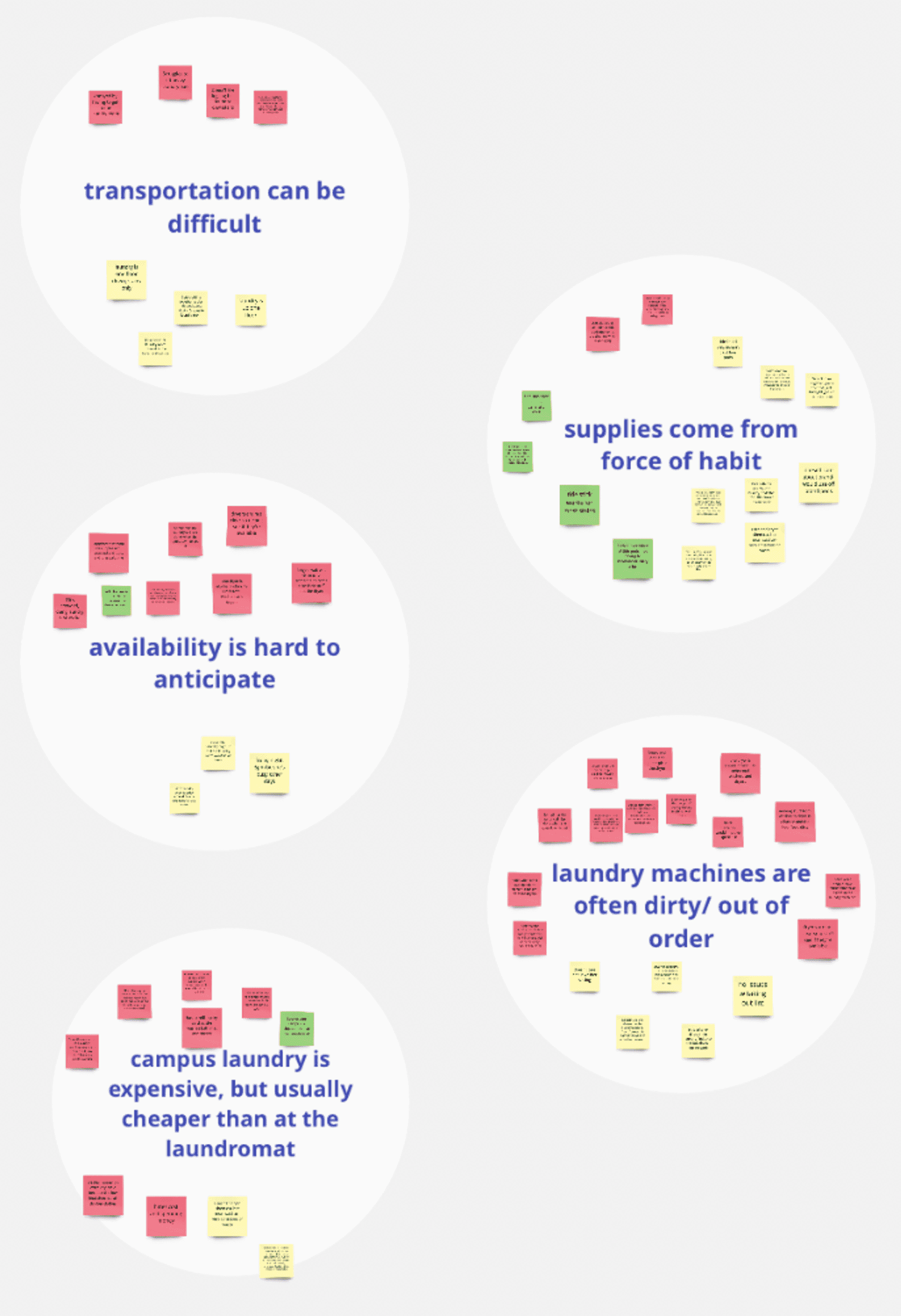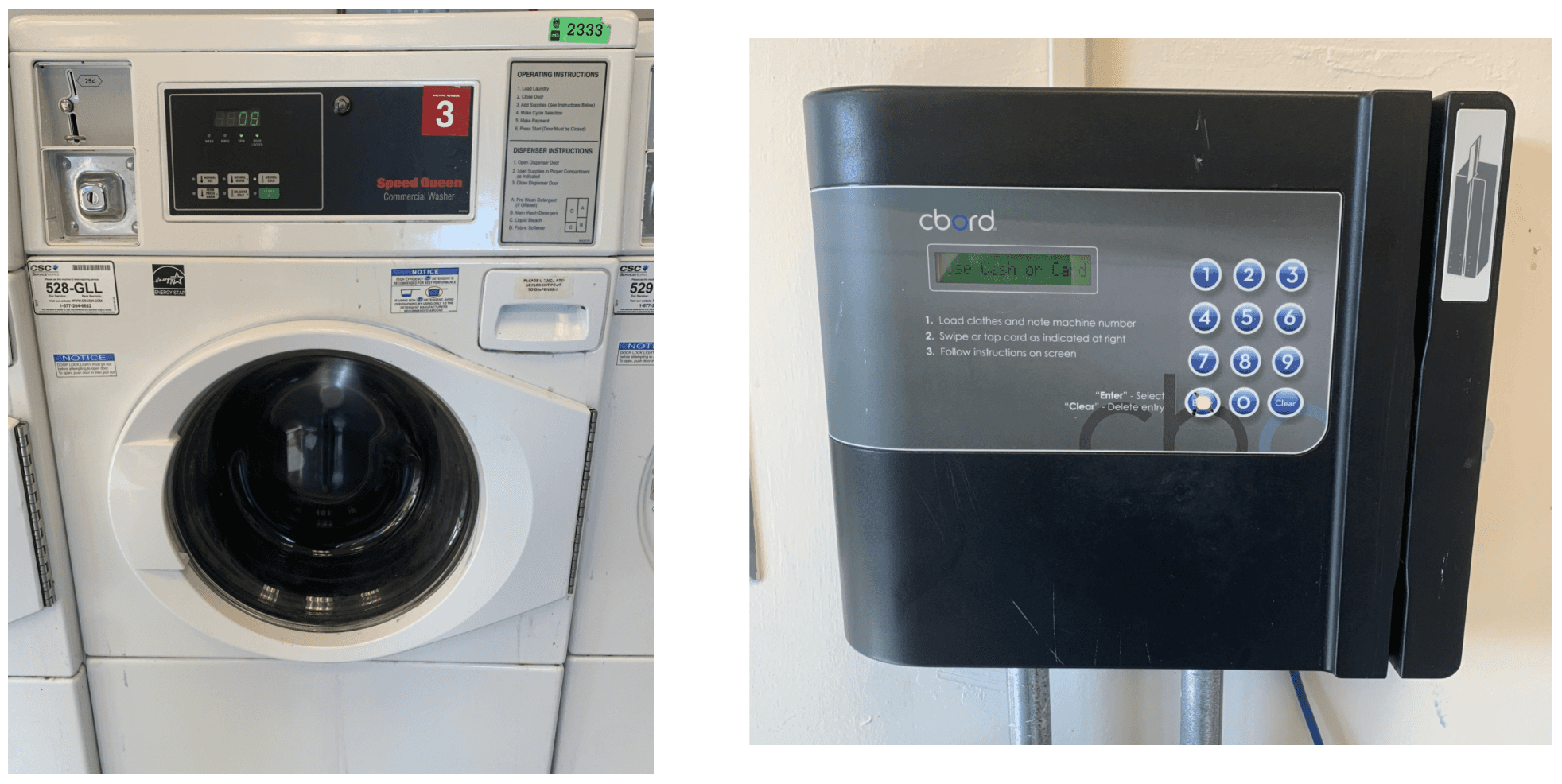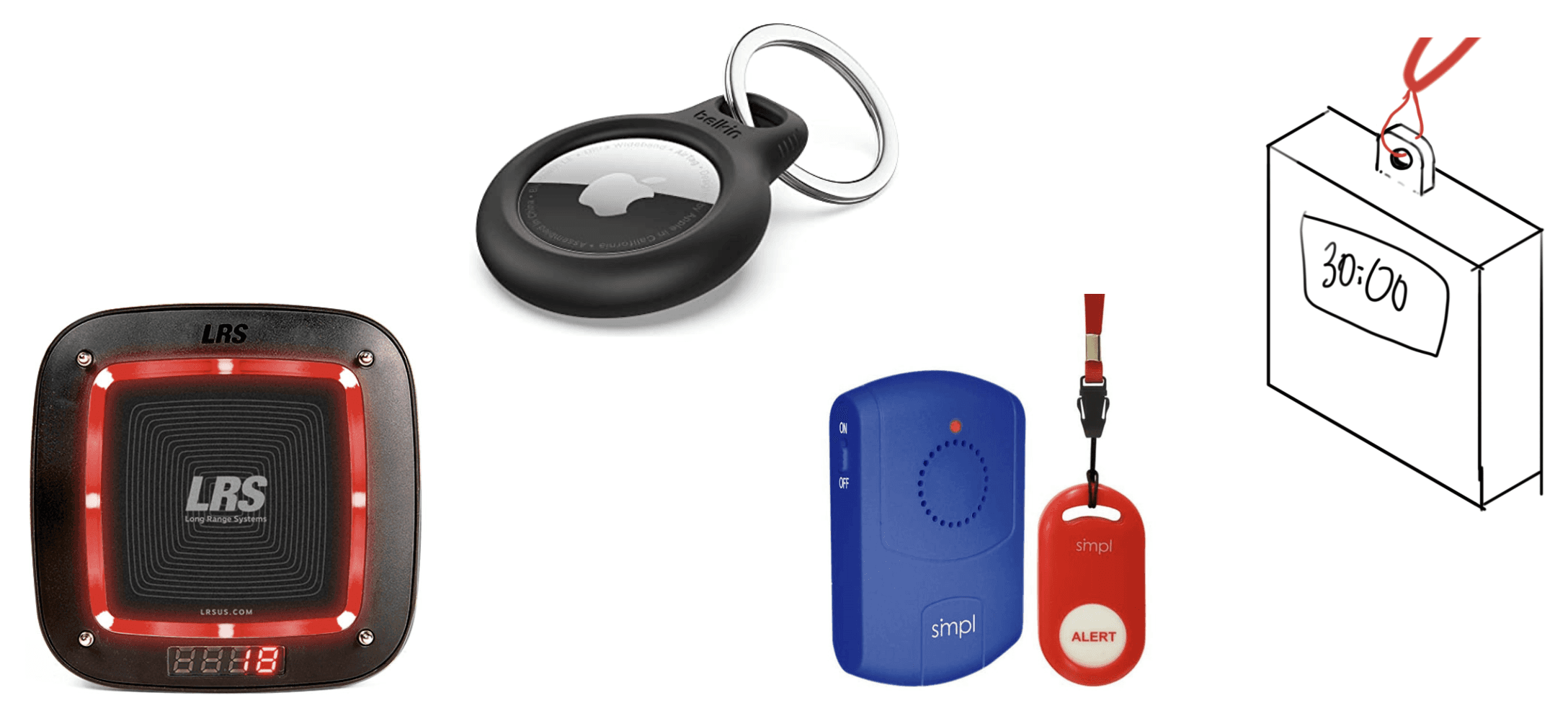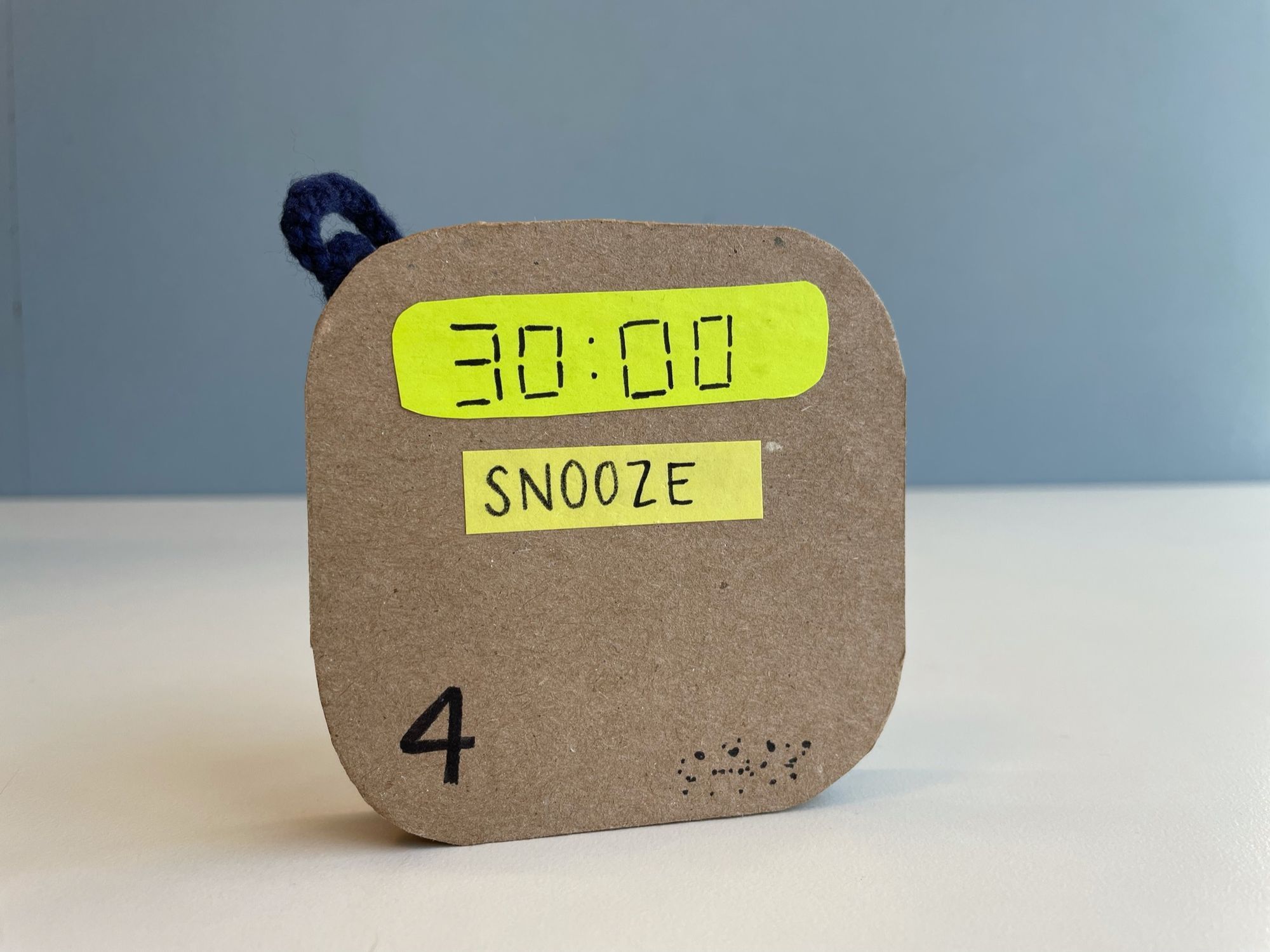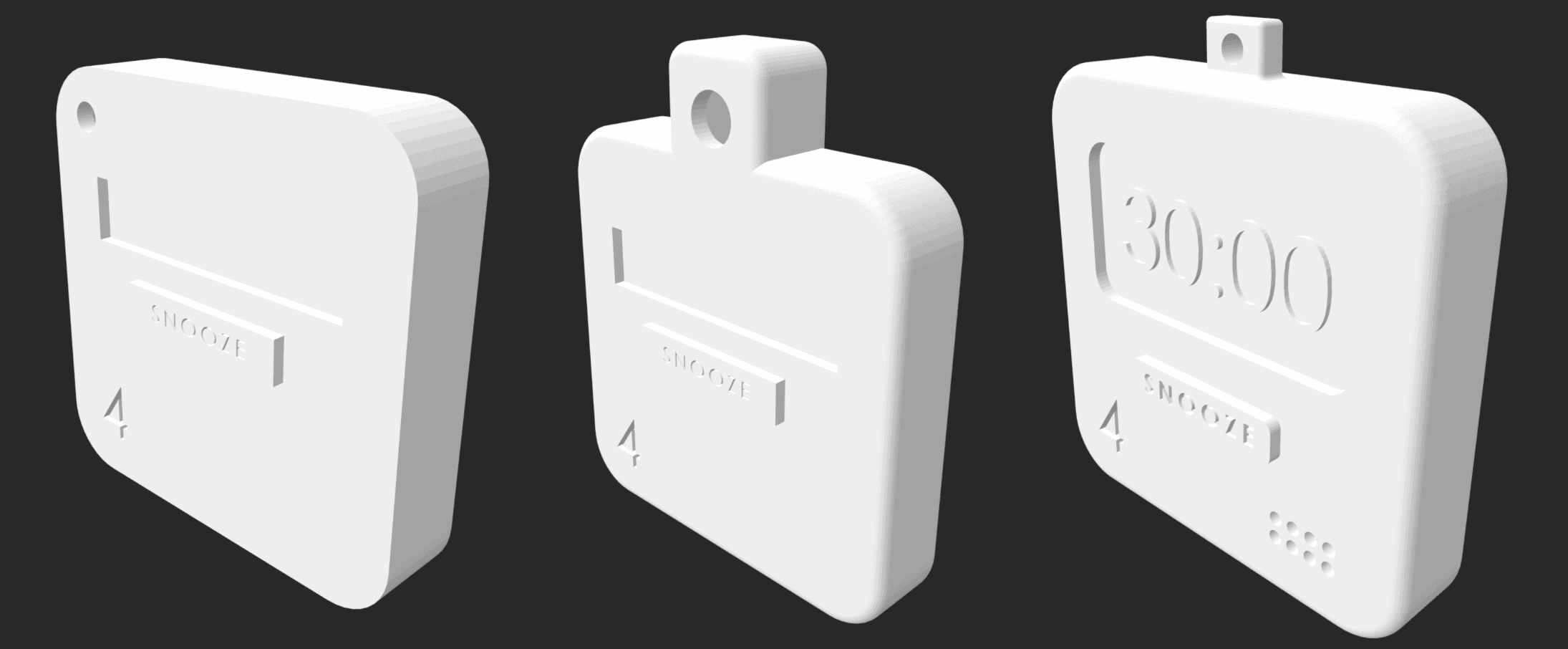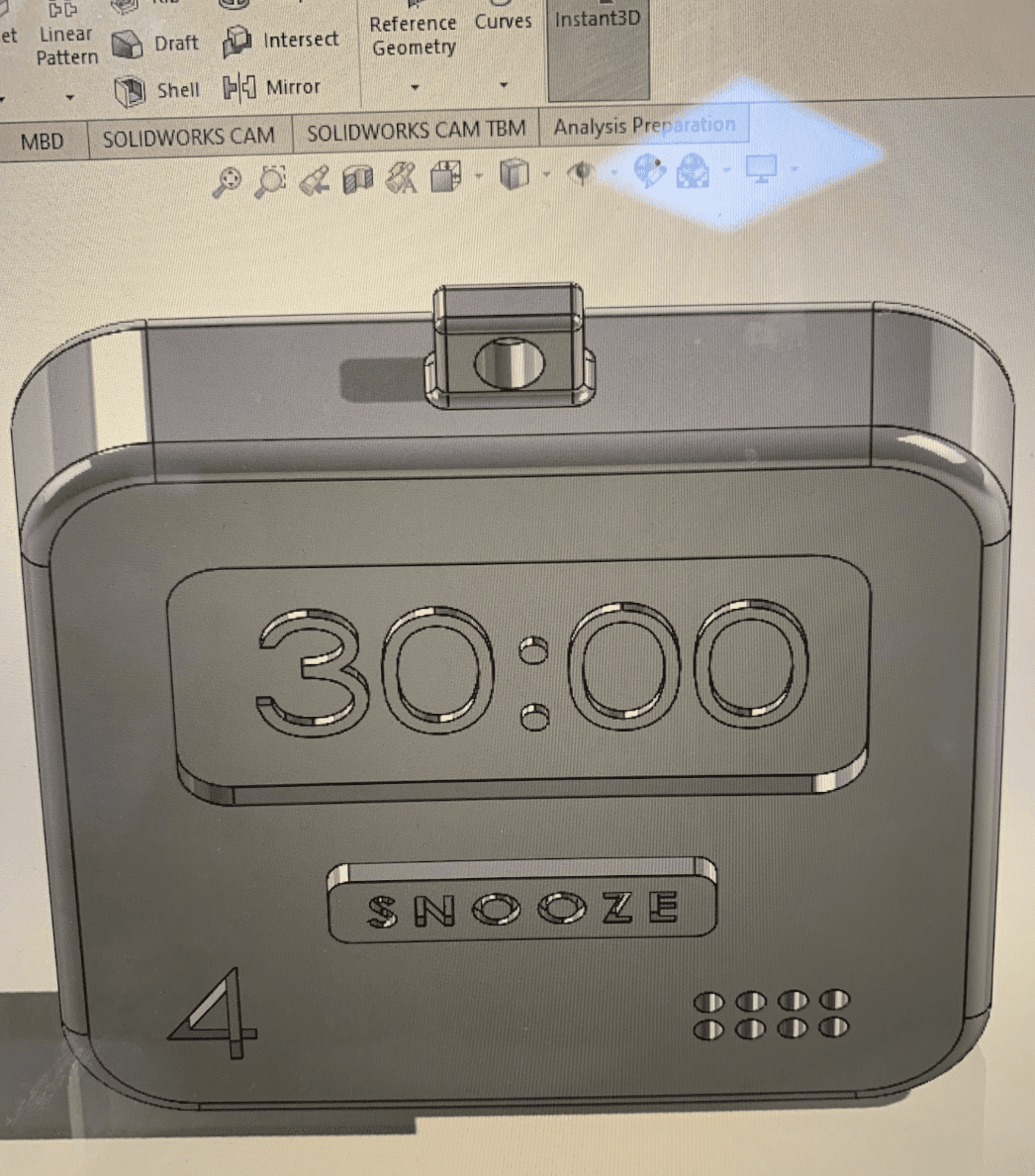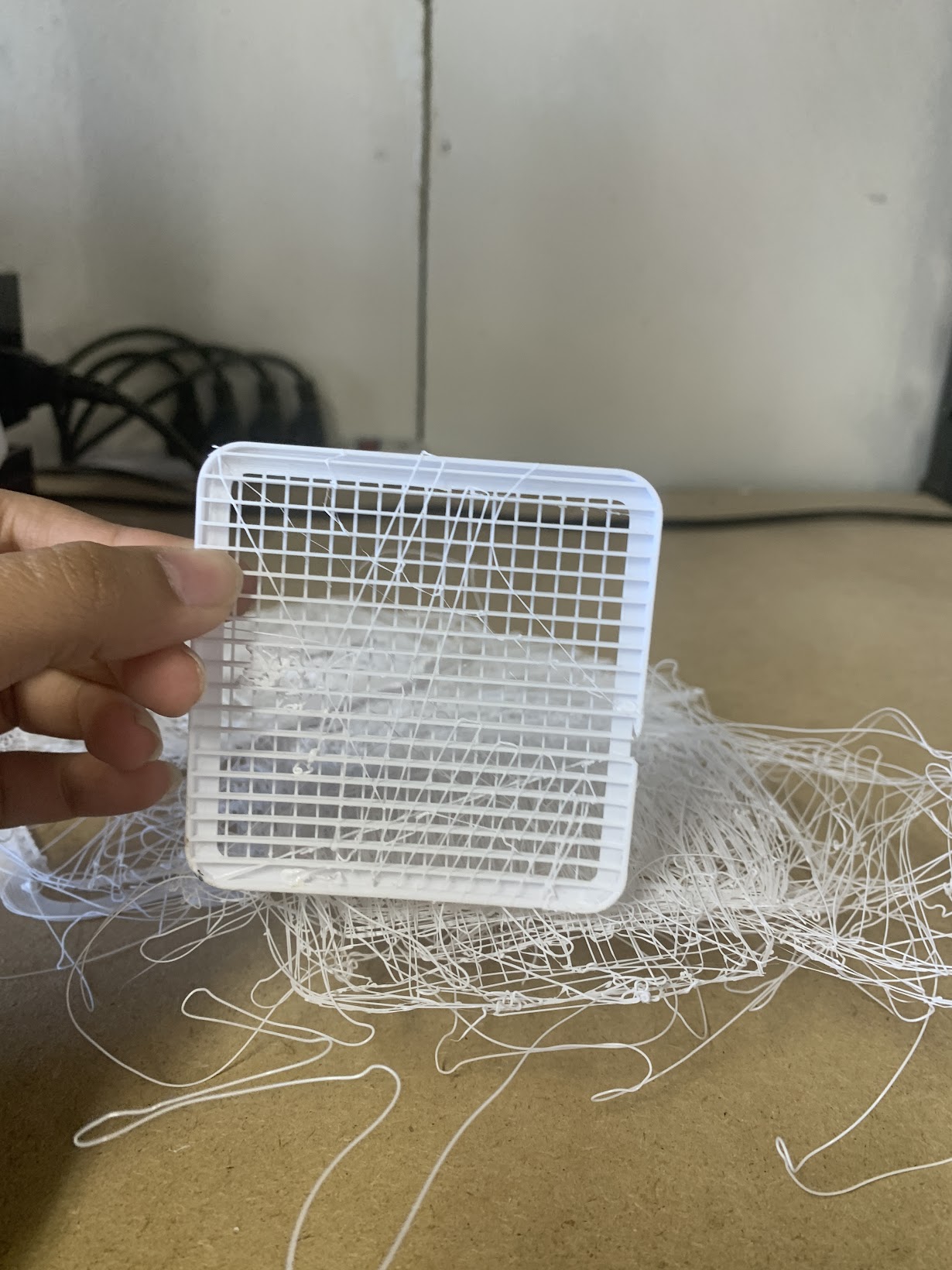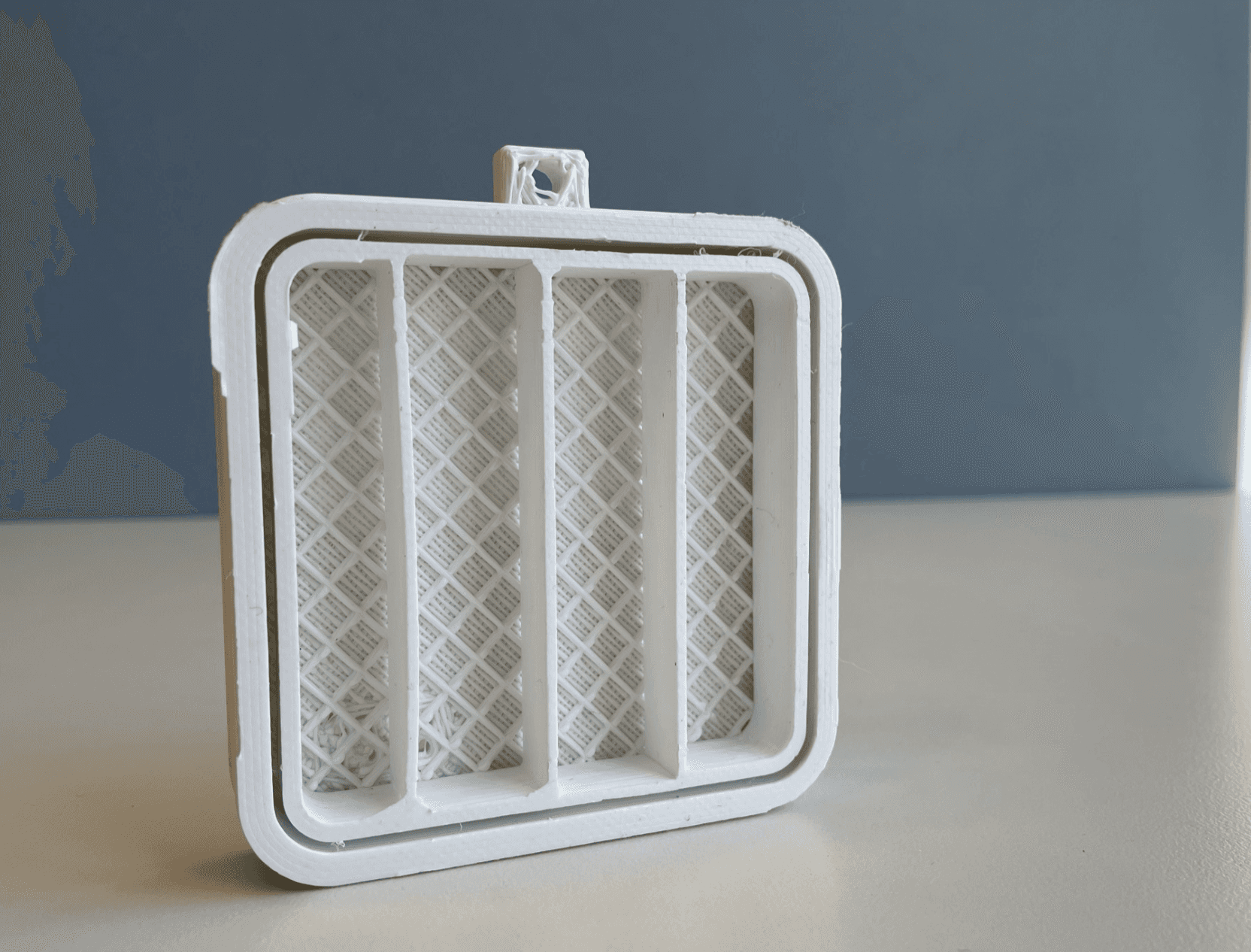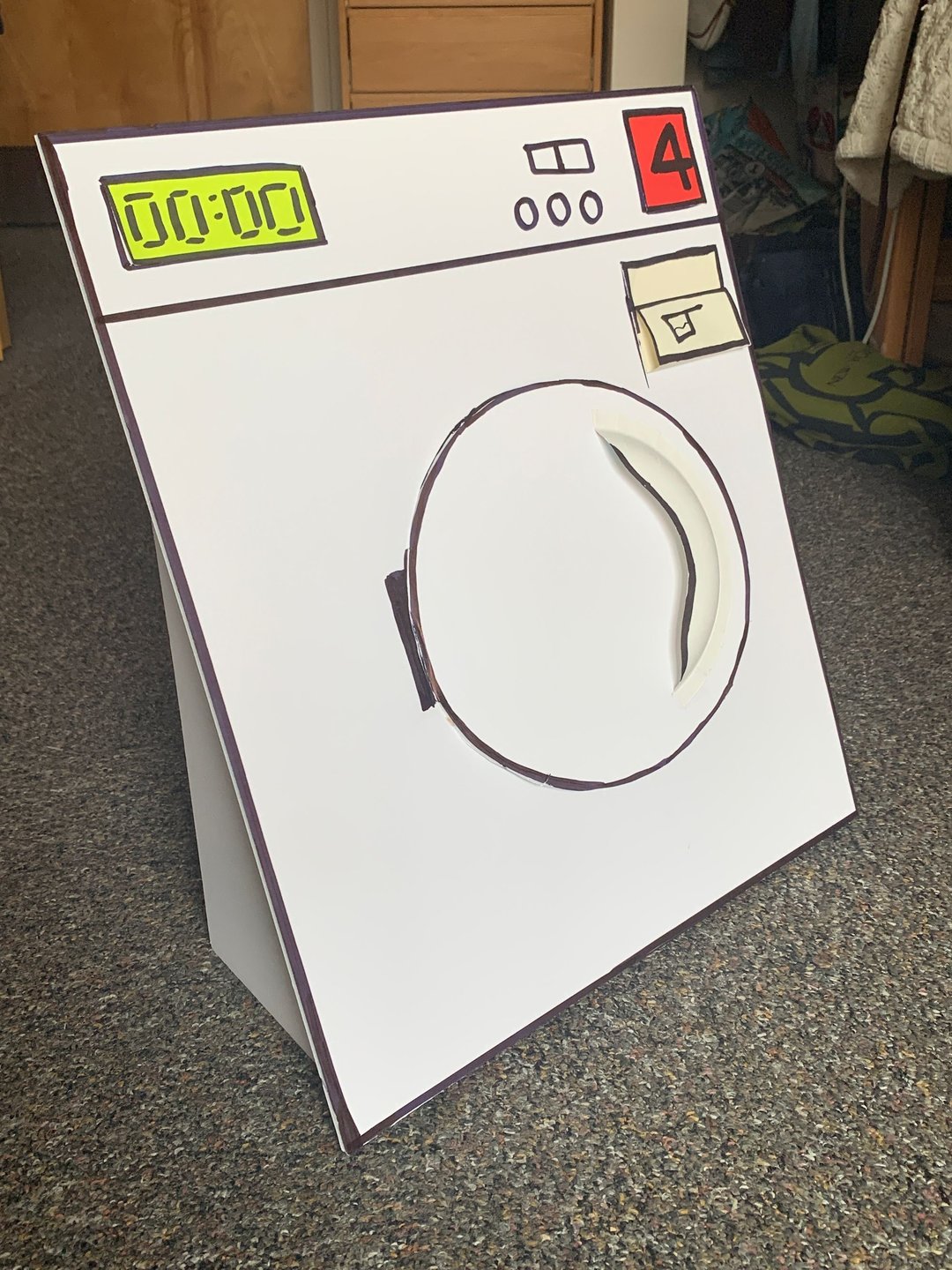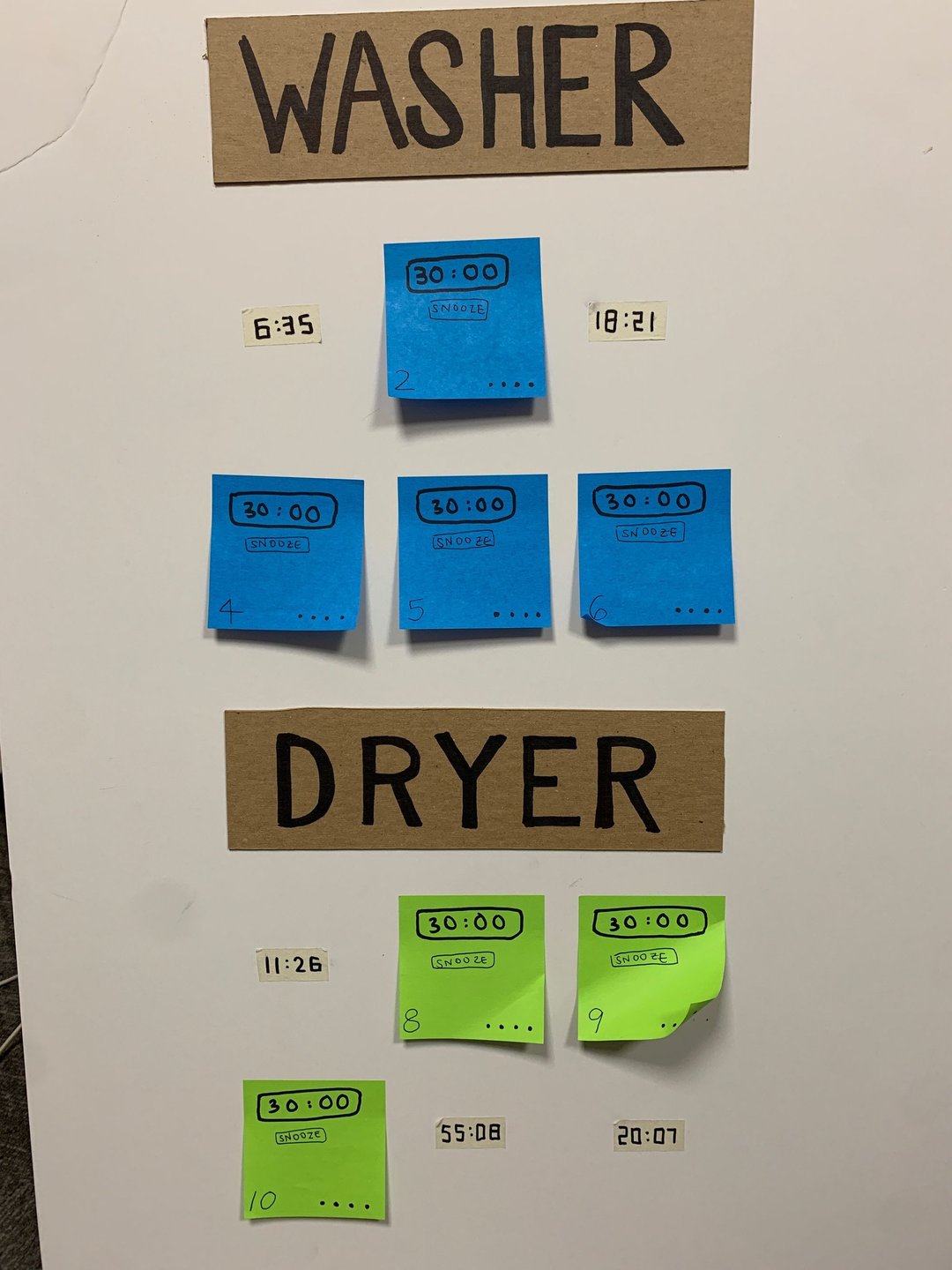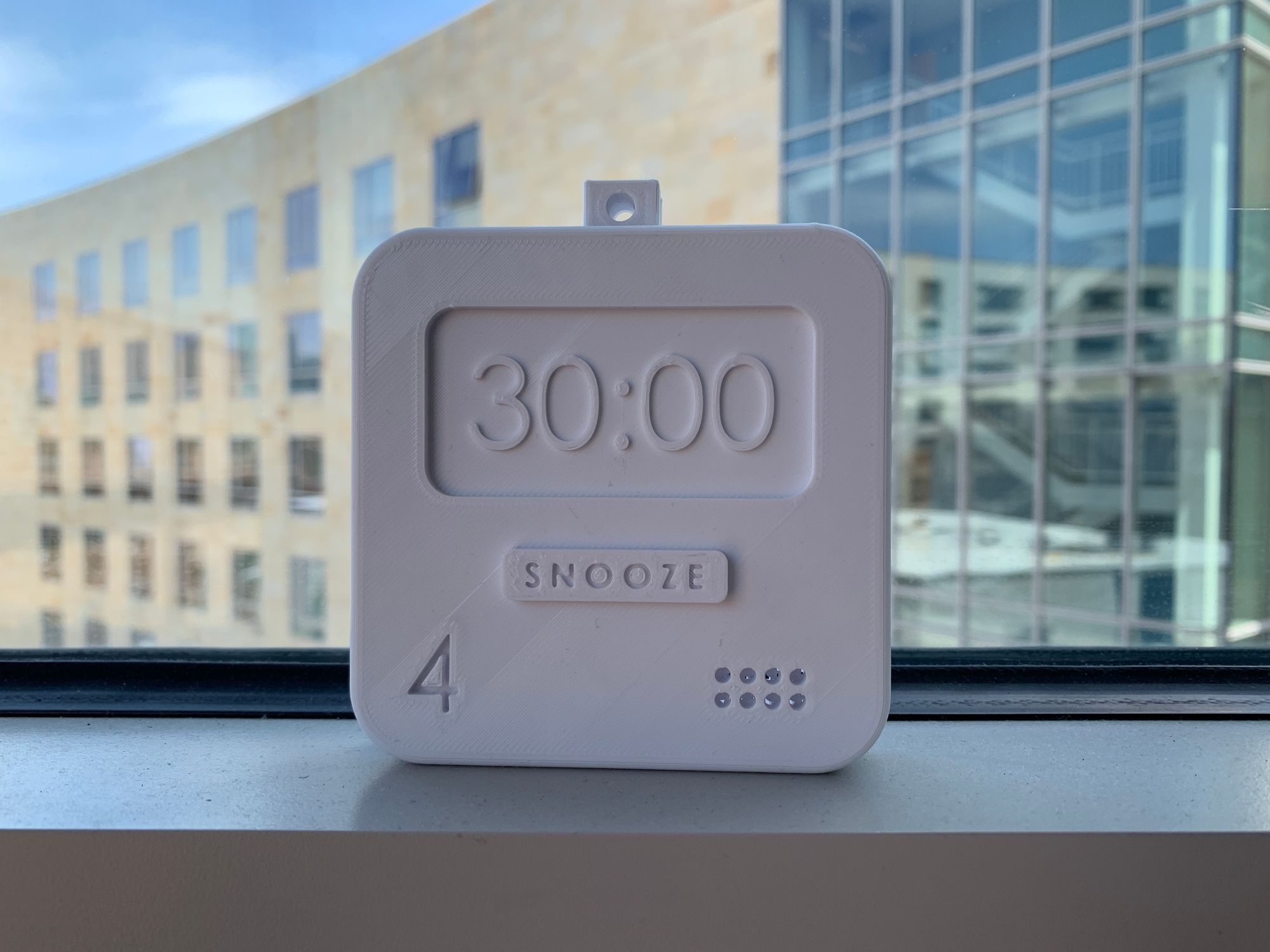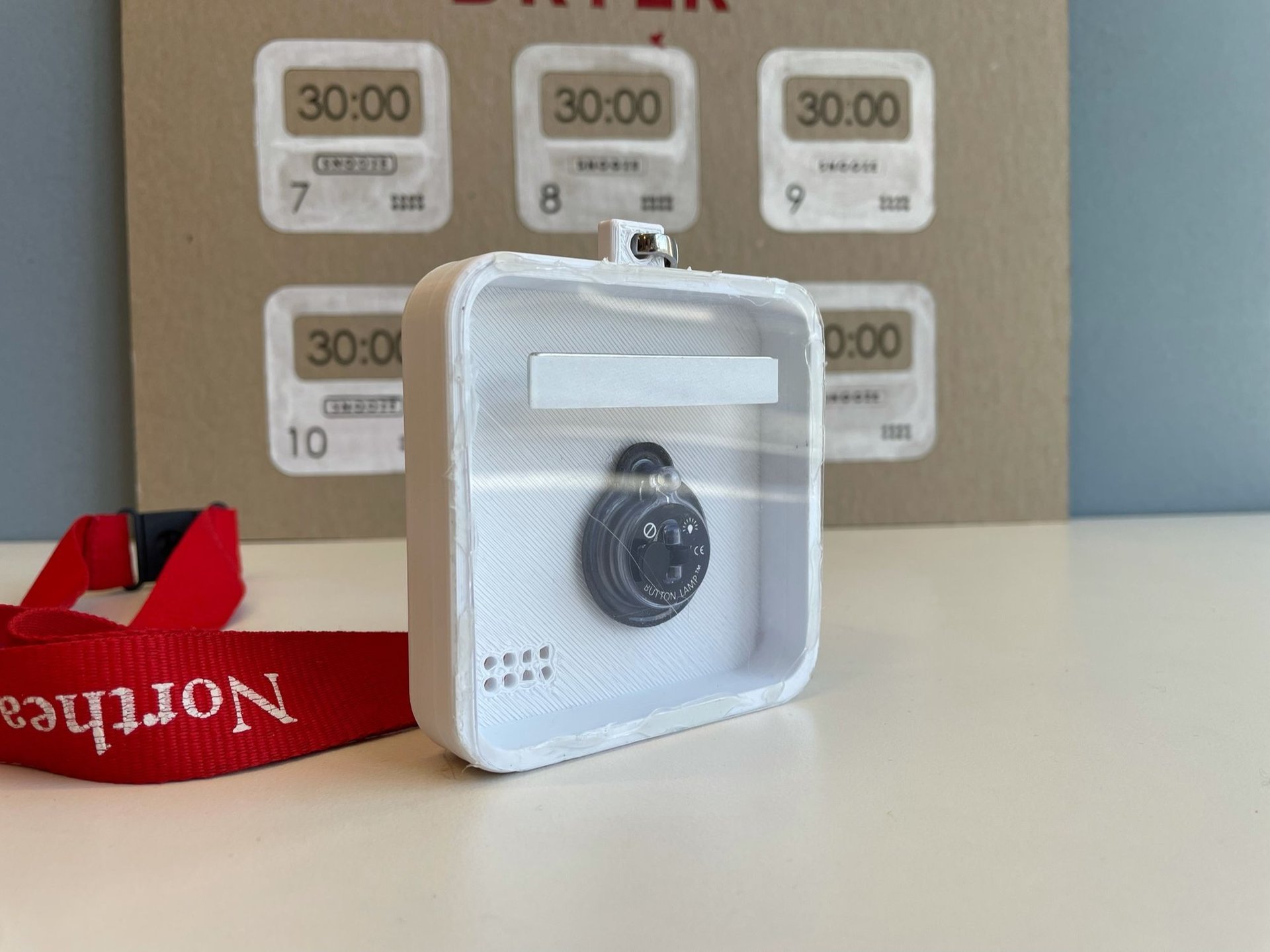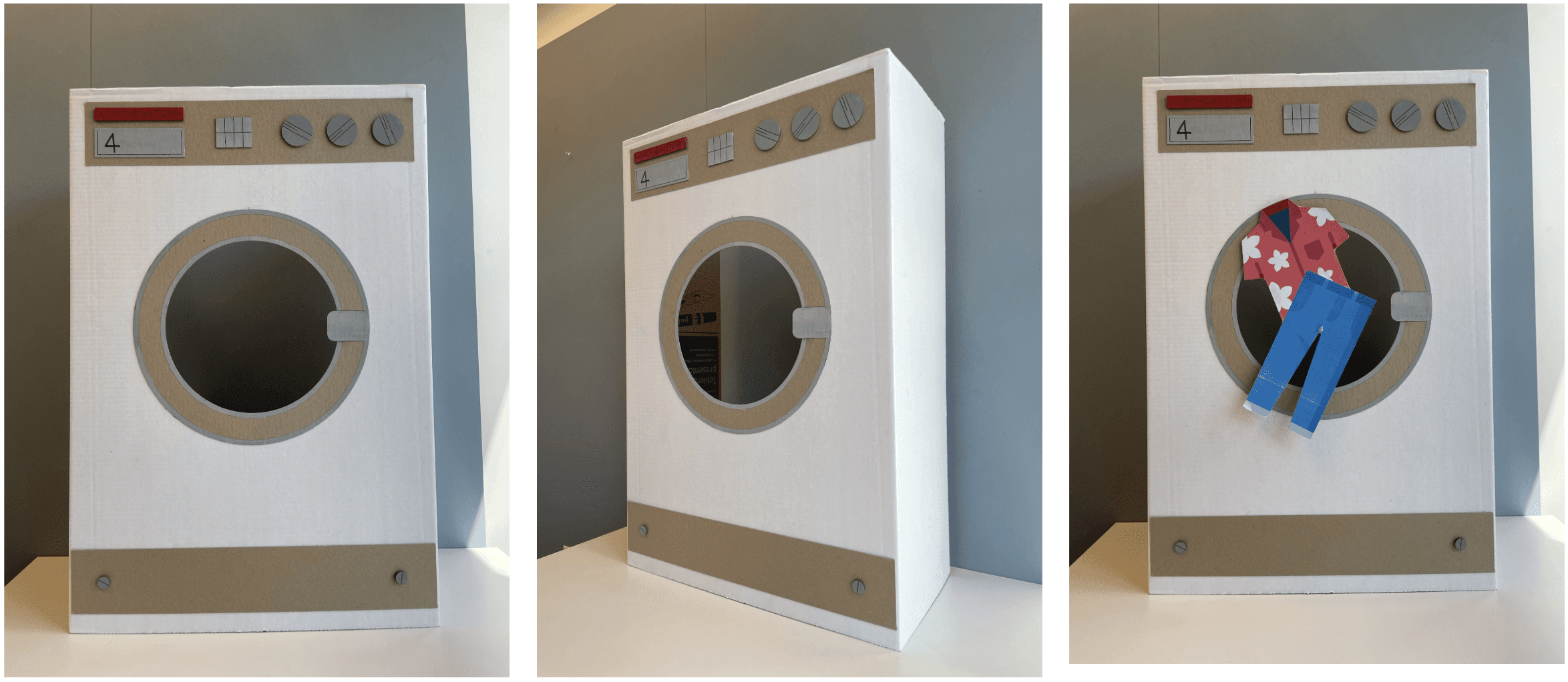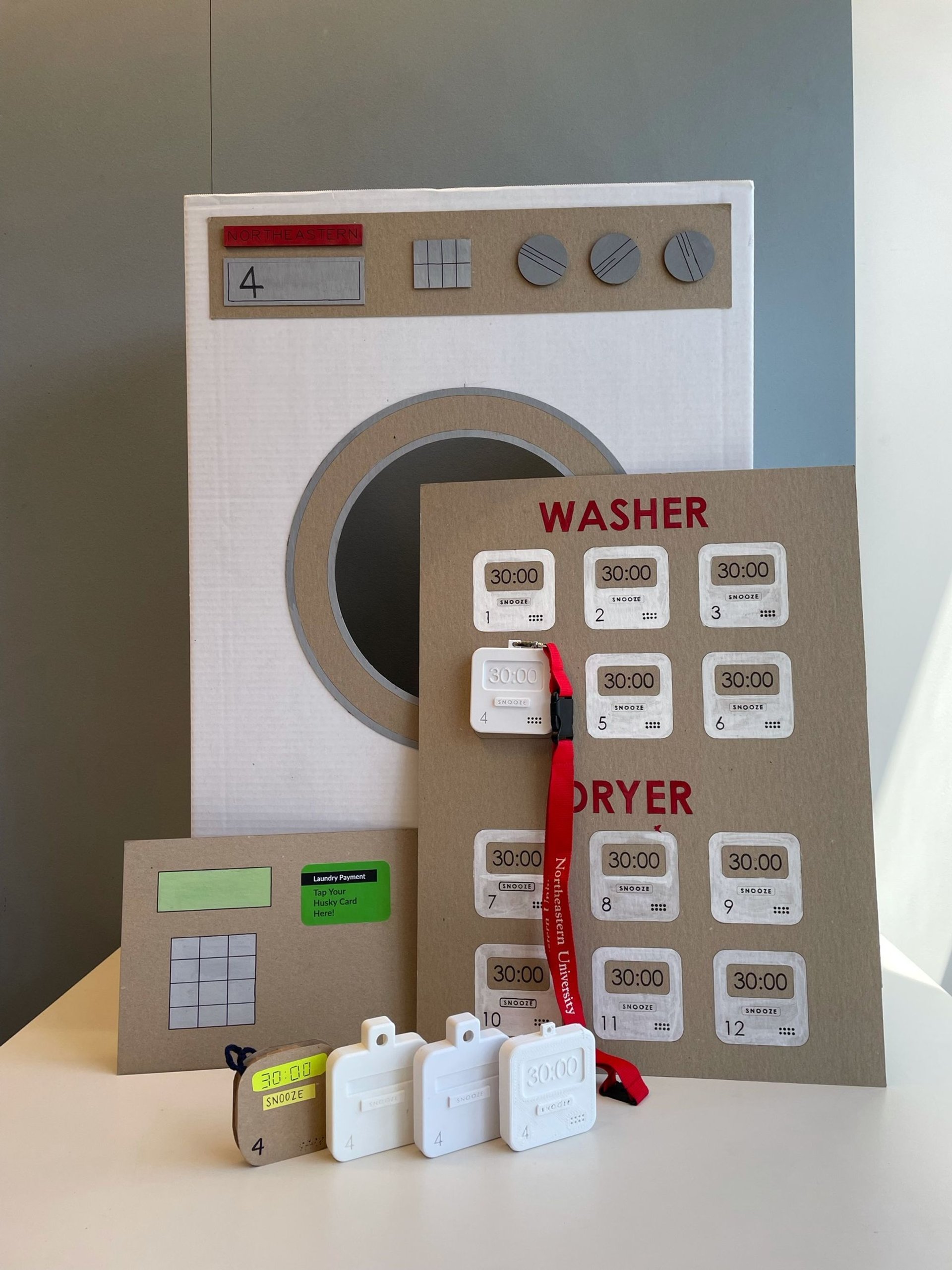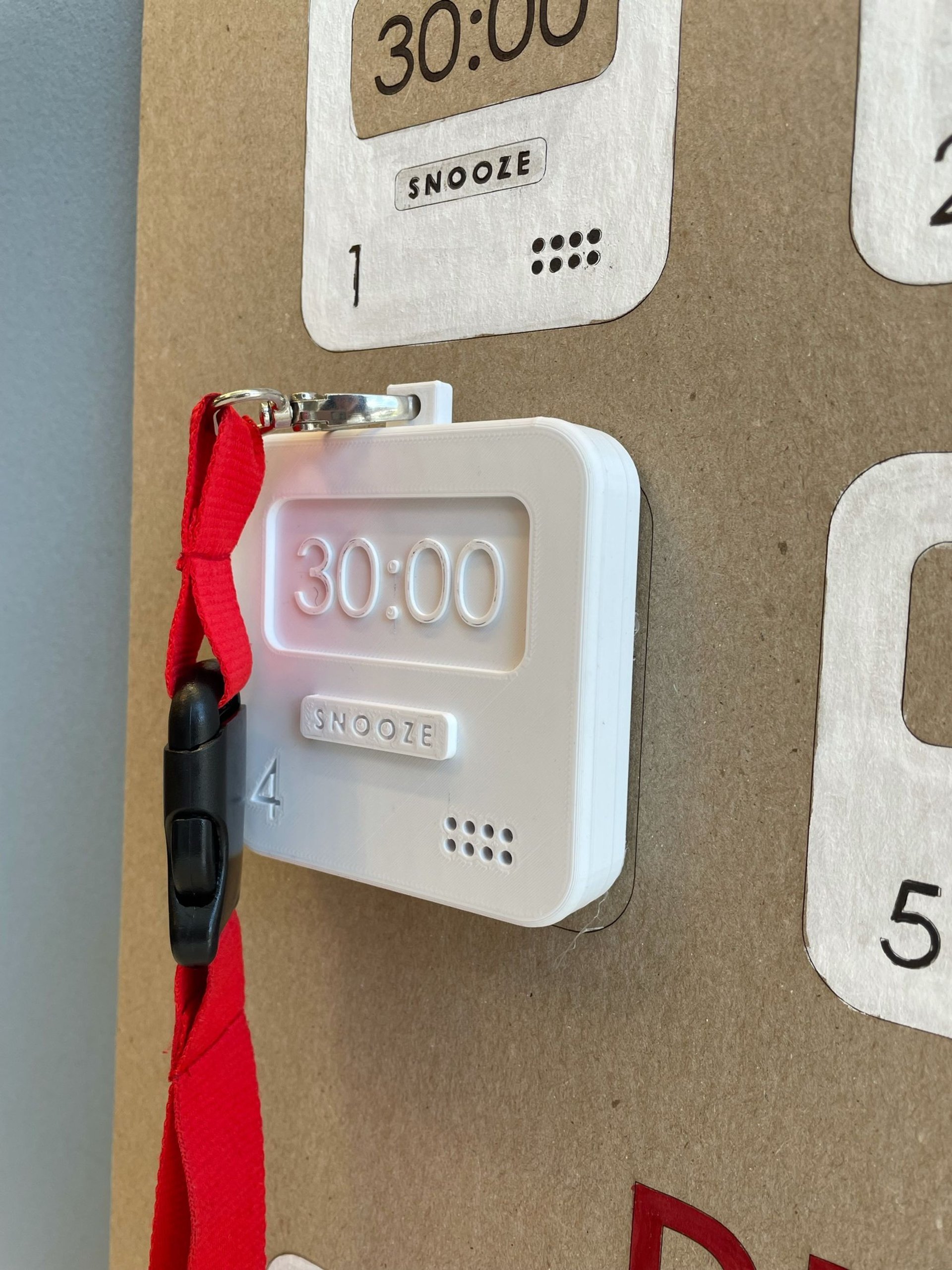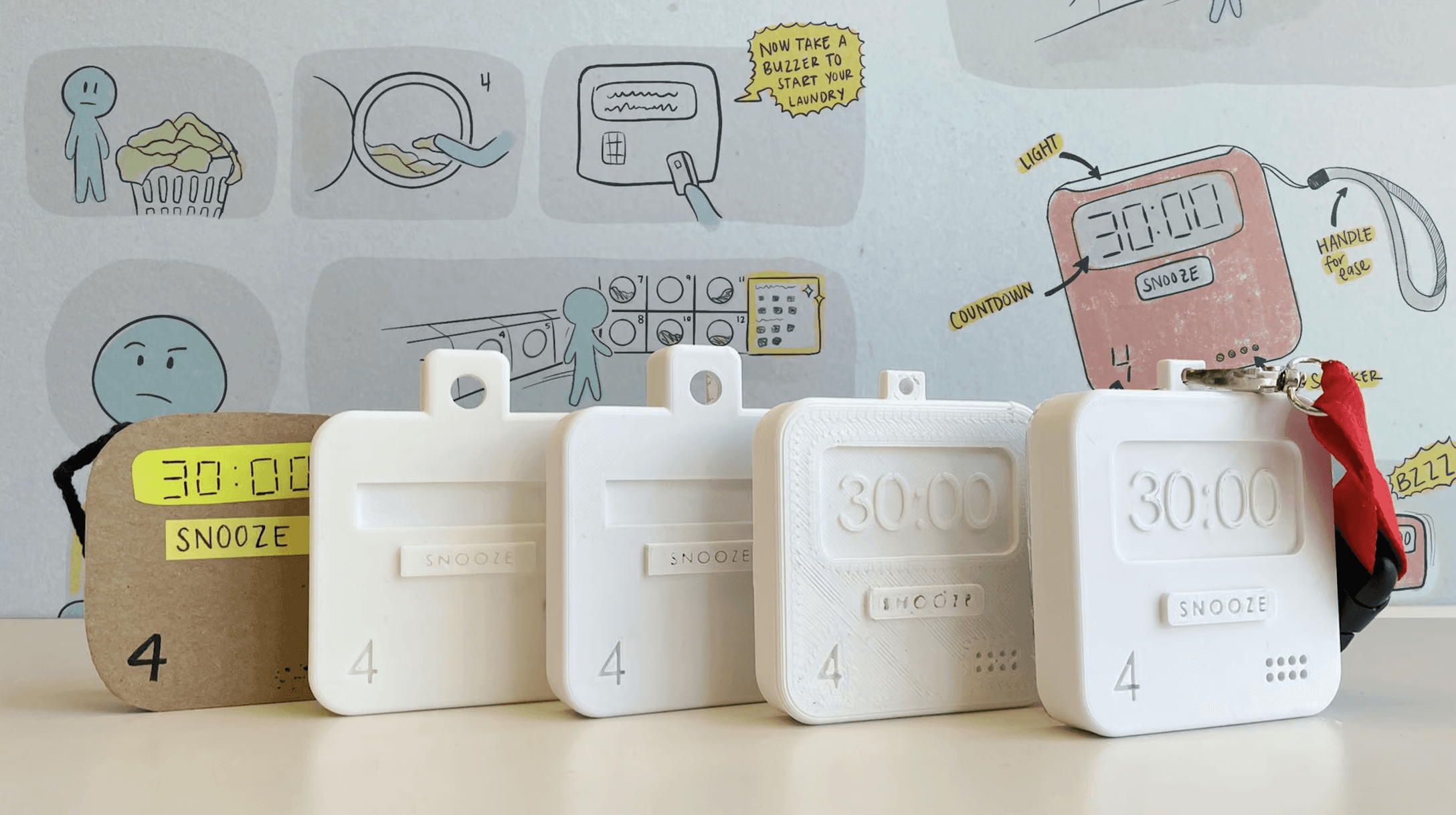Laundry Buddy
Solving college students' laundry problems with a new innovative system.
Background
In the course Experience Design 1, we were tasked with innovating on an experience related to washing. I decided to work on the college laundry experience, as I have seen many people frustrated over the current state of things, especially long wait times, mishandling of laundry, and uncleanliness. This project was a thorough end to end process, from interviewing users and creating problem statements, to prototyping and testing solutions.
It is a difficult task to create something entirely from scratch that does not already exist. Even more difficult is creating something that provides value and doesn't just promote more consumerism. My goal was to create something that felt tangible, useful, helpful, and realistic.
User Interviews: What sucks about doing laundry in dorms?
We interviewed 5 college students for 30 minutes each to understand their needs and goals better. We wrote an interview script so that we would cover all necessary questions, but strayed from the protocol as needed to follow the natural flow of the conversation and gain better insights. To help the interviewees feel more comfortable and answer freely, we used help from objects that we created, including card sorts and conversation starter images.
Learning Goals:
What is students' mindset about laundry?
What is their process for doing laundry, how does it fit into their routines?
What are the burdens of doing laundry?
Processing User Statements and Pain Points
Next, we extracted statements from interview notes and sorted them to find patterns. The statements are grouped into green for enjoyment, red for pain points, and yellow for quirks. We also had a column for headlines, to summarize how a user felt about the process in general.
There were five common pain points that we could solve for:
Transporting laundry from dorms to the laundry room can be difficult.
Supplies used come from a force of habit, such as brand and types of product used.
Availability of machines is difficult to anticipate
Laundry machines are often dirty or out of order.
Campus laundry can be expensive
- Help students anticipate availability of washers and dryers to save time?
- Help the university maintain cleanliness in the laundry room by providing resources for students?
- Make laundry as cheap as possible to provide freedom with scheduling?
- Not invading of privacy of students
- Simple, easy to use, few steps involved
- Accessible to all students
- Adaptable to all laundry rooms
- Reliable
Designing Solutions
Documenting Current Systems
To better understand the user perspective, we went to a Northeastern University laundry room and documented what the current systems in place are. This meant noting down all the steps one must take to complete a load of laundry, from swiping your Husky card, to paying, to choosing a machine, etc.
- A key: Lock your machine while in use so other students don't move your clothing.
- A timer: Countdown the exact time remaining for each cycle without having to leave your dorm.
- A buzzer: Goes off when the cycle is complete. Stay accountable and get rewarded with future laundry credit.
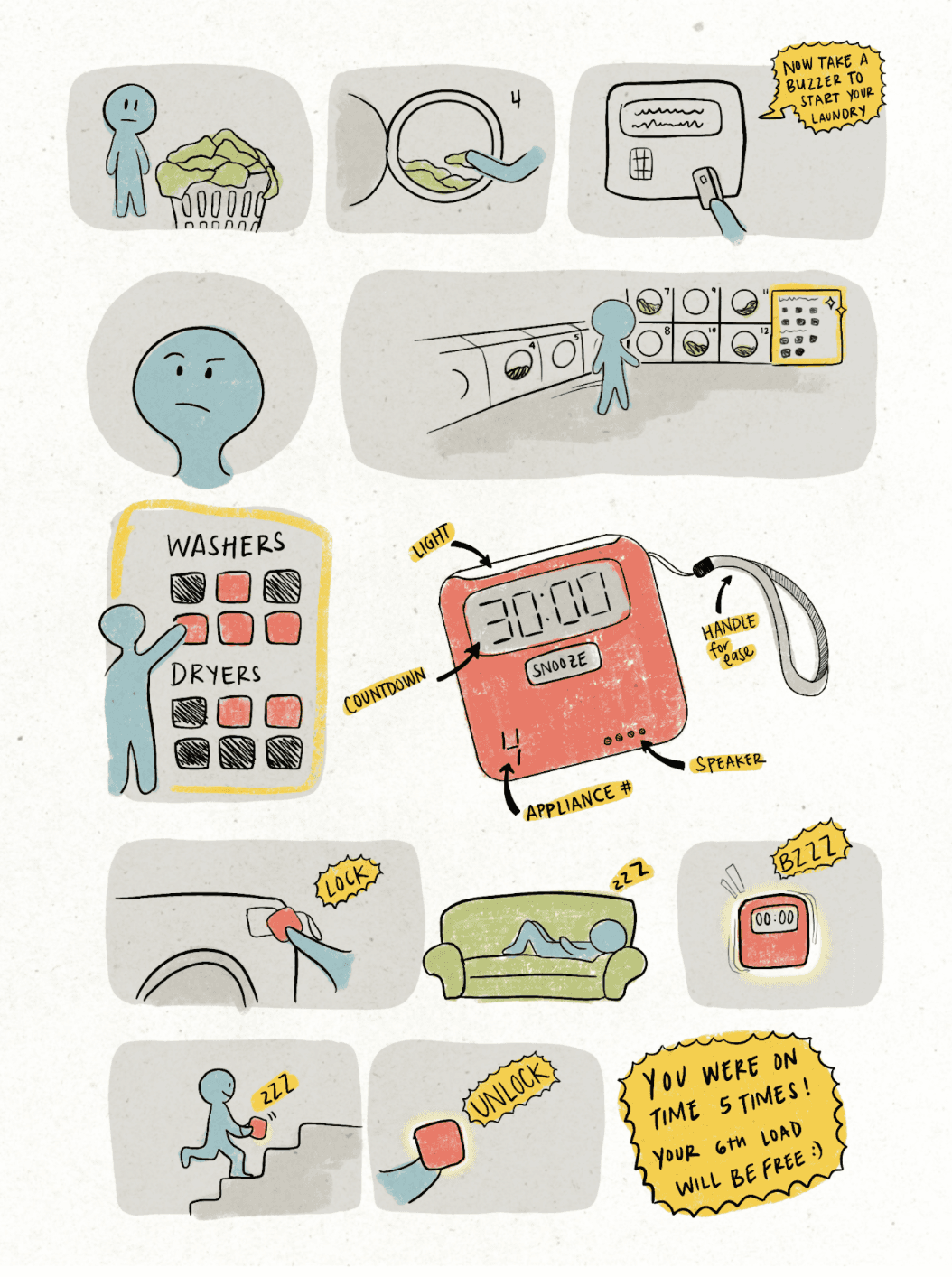
User Journey Map Storyboarding
Then, I drew up this journey map to help demonstrate how our product would ideally work. The cartoon boy shows us encountering the system for the first time. In this graphic we can see how it allows him to relax while doing laundry, by taking off some of the mental load of worrying about clothes being taken, forgetting to go back in time, and financial burdens as well.
Testing Prototypes
The First Prototype: After sketching out our idea on paper, we quickly moved to drafting a physical 'feels-like' model. This was crafted out of cardboard and yarn, to represent the shape, size, and general look of the product. We knew we wanted a space for the countdown timer, a button for snoozing, a handle, a speaker, and laundry machine number.
The Final Design
Our design was finally complete, with new added features on the back!
The magnet at the top helps the buzzer latch onto the board. In a working prototype, this would lock in more securely, similar to how public bikes lock.
The back shows a flashlight, which is an added accessibility tool. For those who are hard of hearing, alarm sounds are not efficient for communication. Therefore, this light will also flash when the laundry is done.
This project was a huge success. Our panel of design judges were pleased with the novel idea, as well as the execution and many steps taken to get to the final product. I was so happy to see how far we had come from our initial brainstorming and interviewing, and how much I had learned.
I really loved working on this project and how it covered the whole process of experience design, from defining a problem and doing user research, to ideating solutions and user testing. By learning the foundations and practicing the process, I know I can apply these skills to any sort of problem: from designing physical objects and spaces, to designing systems and digital products.
